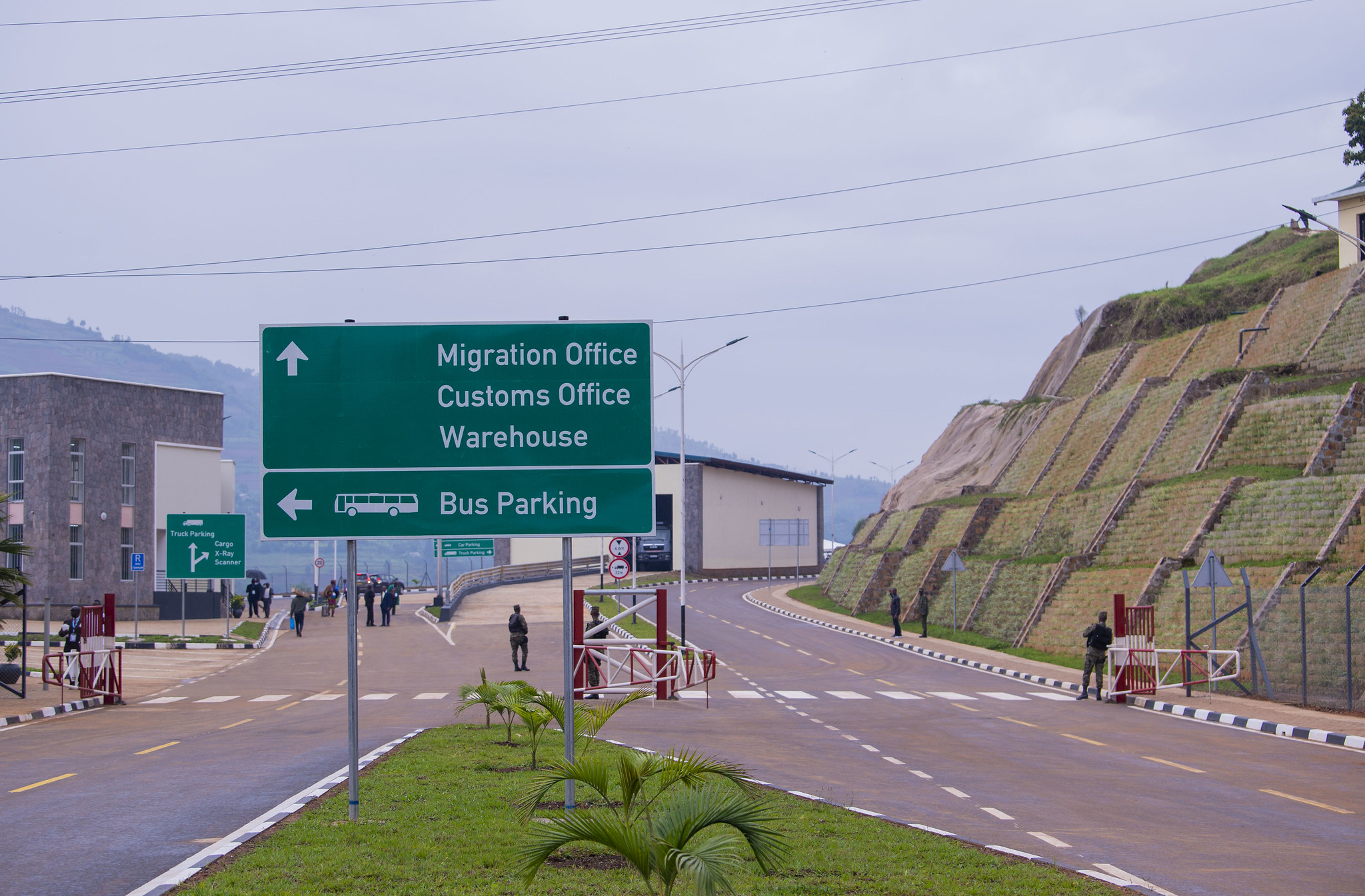
Gatuna One Stop Border Post between Rwanda and Uganda reopened on Monday, January 31, 2022.
In the small hours of Sunday 30th January, Uganda transnational lorry driver, Fabrison Wasswa Ndugwa, steered his lorry through the shiny, newly installed metal gates, into the shiny, newly constructed Gatuna One Stop Border Post (OSBP). Ordinarily, Ndugwa and his lorry would go unnoticed by anyone, except the border guards checking his papers. On this occasion however, he was news.
Gatuna had been under heavy rain, since early evening, but that did not stop the Lorry driver, from almost immediately being surrounded by the gathered phalanx of mass media. His, was the first such vehicle to arrive through Gatuna since 2019.
In the three years since he last past through Gatuna, the place was now unrecognisable. The concept of an OSBP, allows for a smooth flow of traffic between countries, without the need to go through border checks twice. It is effectively a two in one operation.
Gatuna now boasts state of the art drive in, and walk in scanners. In the main reception area, smartly uniformed staff, who would not look out of place at an airport, standby, ready for the onslaught of the heavy volume of traffic to come.
Even before its upgrade to an OSBP, Gatuna, or Katuna, if you are on the Ugandan side, hence, Gatuna-Katuna border post, was the most important frontier, linking Rwanda and Uganda.Accurate figures are hard to come by, but according to Uganda’s ministry of trade, in the fiscal year, ending June 2018, the country earned upwards of $250million in trade, through Gatuna. Within four months of its closure, that had dropped to $170million.
Incidentally, the rumoured forfeiture of Entebbe international airport to China’s Exim bank, was over non payment of a $207million debt, although, it is important to add that China has dismissed the allegations, as “malicious rumours” designed to stir up trouble between China and less developed nations. Accurate, or not, there would be quite a bit of change from $250million.
Ndugwa is one of many who will welcome the reopening of Gatuna. They include transnational lorry drivers like him, businesses of all description, large, medium, small, to individual traders and labourers, who for generations, oblivious of demarcation lines, have commuted to find work in each other’s countries, not to say relatives, visiting each other on either side of the border.
All in their own respective ways, will have paid undivided attention to the flurry of activity, suddenly galvanised in Uganda.
First, Uganda’s representative to the United Nations, Adonia Ayebare, paid a visit to Urugwiro village, as Rwanda’s state house is commonly known. No sooner had he returned to Uganda’s capital, Kampala, than Lieutenant-General, Muhozi Kainerugaba, followed in his footsteps.
Observers will have noted that this was something more than the toing and froing of envoys and delegations, that had become common, between the two countries, to discuss the normalisation of the soured relations.
General Kainerugaba who is commander of his country’s land forces, is also special security adviser to Uganda’s President, Kaguta Museveni, who also happens to be his father.
The general is an admirer of President Kagame, and has consistently drawn attention to the kinship between Rwanda and Uganda, and called for amicable relations between the two nations.
We know now that General Kainerugaba, had come with a set of proposals, which got a sympathetic hearing in Rwanda. No sooner had he returned to Kampala, than a carefully worded statement from Urugwiro village, announced the reopening of the Gatuna-Katuna border.
“Following the visit to Rwanda of Lt Gen Muhozi Kainerugaba, senior Presidential advisor on special operations and commander of land forces of the Uganda People’s Defence Forces (UPDF), on 22nd January 2022, the Government of Rwanda has taken note that there is a process to solve issues raised by Rwanda, as well as commitments made by the Government of Uganda to address remaining obstacles…”
“In this regard and in line with the communique of the 4th Quadripartite Summit held at Gatuna/Katuna on 21st February 2020, the Government of Rwanda wishes to inform the public that the Gatuna border post between Rwanda and Uganda, will be re-opened from 31st January 2022.”
We can only speculate on the detail of what was discussed, but the statement leaves little doubt about Rwanda’s position. Kigali was assured that “a process to solve issues” had been kick started, and they are clearly willing to give Uganda further benefit of the doubt, and see how that process unfolds.
Arguably, the biggest impediment to solving the “issues” has been a determined intent in Uganda, to feign ignorance of what they are. But issues there are, and they partly originate in the way the Ugandan leadership perceives itself, in relation to Rwanda.
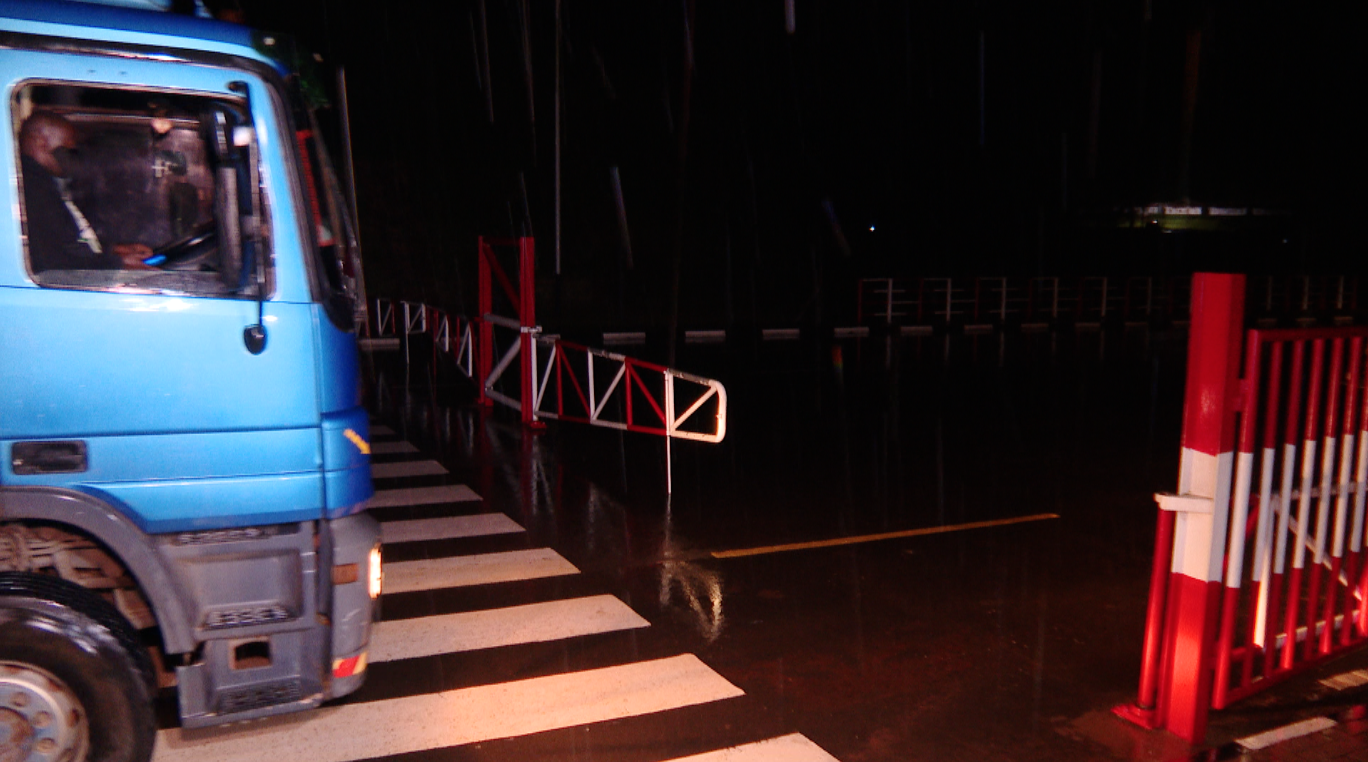
A truck crosses Gatuna One Stop Border Post following the reopening on January 31. World Bank says regional integration will be key to recovery.
The leadership of Uganda’s National Resistance Movement (NRM), has always assumed a supervisory role over the Rwanda Patriotic Front (RPF). From their perspective, Rwanda is the junior partner. It is an assumption the RPF has tended to regard with a degree of weary bemusement, but one which has carried deadly consequences.
In 1996, the then Rwanda Patriotic Army (RPA), followed the perpetrators of the 1994 genocide against the Tutsi, into Zaire, as it was then, now Democratic Republic of Congo. With their mission all but accomplished, the Uganda leadership, demanded that overall command of the operation should be handed over to Ugandan military command.
Perhaps in another lifetime, was the firm response from the RPA leadership. It was Uganda’s insistence on playing the senior partner that would lead to clashes between the two countries’ armies, in Kisangani, when Uganda sought to enforce its demands.
The conflict left a bruised Uganda chastened, but incensed. Since then, the leadership has reportedly fantasized about bringing about regime change in Rwanda.
In his book, Africa’s World War, French historian Gerard Pruniere, no friend of Rwanda, describes a meeting at which he was present, between the younger brother to President Museveni, General Salim Saleh, and Seth Sendashonga, who had served as a minister in the RPF led government of national unity. The two had reportedly met to discuss the ongoing strategy to overthrow the government in Rwanda.
The strategy would remain in abeyance, pending an opportunity to be put into action. That opportunity would come in the shape of the Rwanda National Congress (RNC), formed by former Rwandan General, Faustin Kayumba Nyamwasa. The RNC was in many ways as much Uganda’s strategy, as it was of its founders.
Most recently, the RNC became part of an alliance of anti Rwanda armed groups, the so called P5, or party of five, which included Victoire’s Ingabire’s FDU-Inkingi. They joined a plethora of armed groups that have terrorised the Democratic Republic of Congo, for the best part of twenty years now. The plan it seems, the alliance would attack Rwanda, and install a government of their choice.
A 2018 United Nations Group of Experts report, designated P5, a terrorist organisation. It came as no surprise to Rwanda, when the RNC established its headquarters in Uganda, supported by that country’s military intelligence.
With this new base, begun the persecution, and arbitrary arrest of Rwandans in Uganda, by the country’s Chieftaincy of Military Intelligence (CMI).
For generations, the line between Rwanda and Uganda has been disregarded by citizens of both countries, who live by either side of it. Now Rwandans were rounded up arbitrarily, and thrown in unknown detention centres, accused of spying.
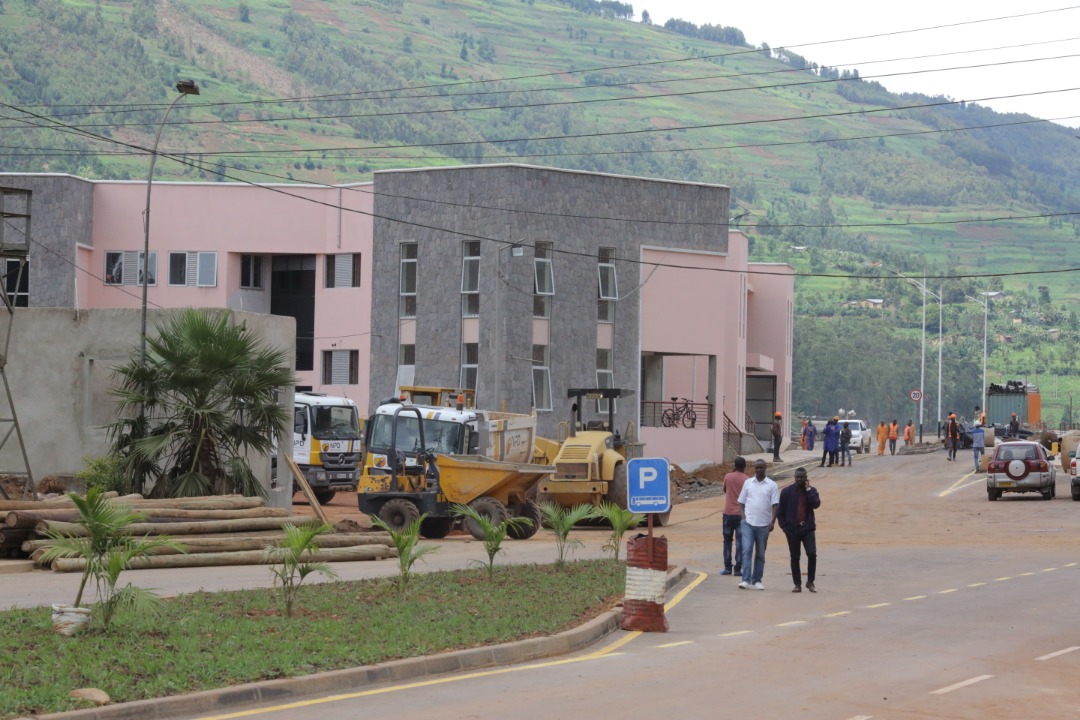
Gatuna One stop border post
Those who were released, told of ill treatment that amounted to torture, which included savage beatings that left some permanently maimed. The manner of their release, would be being bundled into a van, in the dead of night, and dumped at the border, from where they would stagger to the Rwanda side. Almost all of them would require medical treatment, many needing hospitalisation. Some could not be saved, and lost their lives.
It is difficult to say exactly, how many were subjected to this treatment, since numbers crossing the border are not recorded. But to date, over a thousand have been identified. They include mostly farm labourers, handymen, and petty traders. Among those arrested for spying, have been young mothers, with their children.
According to those who returned, they were first invited to join the RNC’s armed group. If they refused, as most did, they were then arrested as spies, beginning their ordeal.
As the arbitrary mass arrests intensified, Rwanda issued an advisory warning to its citizens, not to travel to Uganda, in the process, closing the Gatuna-Katuna border.
The response to the closure from Uganda, was several stages of denial. First, they shrugged, and scoffed.
It would not be closed for long they predicted. After all, how would Rwanda survive without Uganda? They would starve. But Rwanda did not starve. Then from media, to pronouncements from politicians, came threats, bellicose noises aimed at Rwanda. Still, their neighbour remained unmoved. A year, two, three, went by. Finally, Uganda began to realise that Rwanda was not a province of Uganda, after all.
And at long last, it dawned on them that while the strained relations were, among other ills, economically ruinous for both countries, it was in fact Uganda that had the most to lose. The trade deficit between the two countries after all, was weighted in Uganda’s favour. Rwanda could always take its custom elsewhere, but new export markets are not so easily found.
If nothing else, these economic realities seem to have concentrated minds. Those at the centre of power always clearly understood what needed to be done, if normal relations were to be restored.
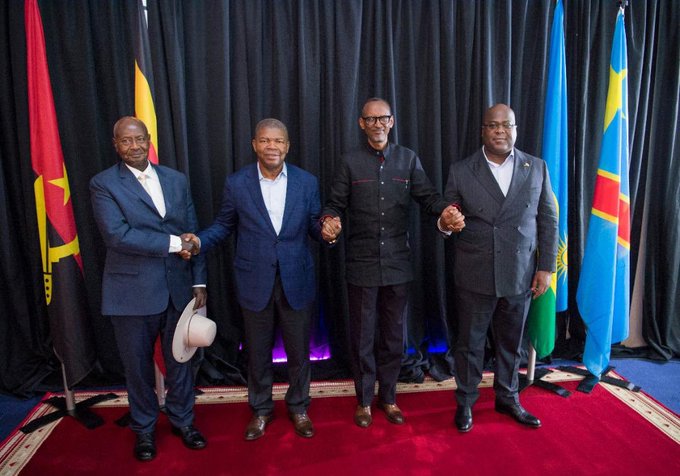
From Left Presidents Yoweli Museveni of Uganda. Louranco of Angola, Paul Kagame of Rwanda and Felix Tshisekedi Tchilombo of DRC at Gatuna Katuna border, February 2020
The evidence presented by Rwanda, against Uganda, including testaments from the people dumped at the border, was so overwhelming, that in an agreement mediated by Angola’s Joao Lorenco, Uganda made no strenuous effort to deny it. Instead, they undertook to resolve the issues, in effect, refrain from seeking to destabilise their neighbour.
But the signing of the agreement did not bring about any perceivable change. Even before the ink was dry, more Rwandans were being dumped at the border, the worse for wear. Rwanda charged that there was no change in Uganda’s support to anti Rwanda armed groups either. But, they waited, patiently, and simply pointed to the agreement, every time Uganda complained about the hardship caused by the closure of the border.
It is this impasse that General Kainerugaba hoped to resolve. It is the second time he has stepped up to mend relations that those around him have soured. Once again, Rwanda waits, patiently. There have been gestures and signs, but to date, nothing has changed.
One of the gestures was the replacement of CMI chief. Major-General Abel Kandiho, who stood out in his zealous persecution of Rwandans, was initially moved from his position, and appointed Uganda’s envoy to South Sudan.
As it turned out, he was to hold that position for a mere week or so, before being moved again, to become Joint Chief of Staff, in the Uganda Police Force.
As head of CMI, the general has earned an unenviable reputation, internationally, for his disregard of the law, and the rights of the individual. It may have been thought wise to keep him at home, away from the reach of all manner of international arrest warrants.
Putting Uganda and Rwanda relations where they should be, is a profound challenge. It will ask nothing less than a change in mindset within the highest leadership in Uganda, or at the very least, a pragmatic recognition that in attempting to destabilise Rwanda, Uganda hurts itself, at least as much as it intends to hurt Rwanda.
Uganda’s intelligentsia, the media especially, could help, by showing enough courage to name the problem. to recognise that far from there being an issue between Uganda and Rwanda, there are rather issues arising out of Uganda’s attitude towards Rwanda.
The international media’s bothsidesism in the name of balance, misleads more than it informs. It is not always that both sides have equal merit. A failure, or refusal to recognise that creates a false balance.
There is much to be said for the adage, often attributed to journalism Professor, Jonathan Foster, that if someone says it’s raining outside, and another person says it’s dry, the job of the journalist is not to balance their claims, the job of the journalist is look out of the damn window, and report what is actually happening.
At a glance, out of the window in this instance, it is clear that far from there being an issue between Uganda and Rwanda, there are rather issues arising out of Uganda’s attitude towards Rwanda.
General Kainerugaba need not have travelled all the way to Urugwiro Village in Kigali, to remove the barriers to amicable relations, between the two nations. He need only have taken a stroll to Uganda’s statehouse, in Entebbe.
Uganda’s chattering classes, the media in particular, social or other forms, can contribute by turning its attention to this basic truth, rather than as they have done up to now, do everything to distract from it. They need to put as much energy in acknowledging the actual issues, as they have in what can only be deliberate obfuscation.
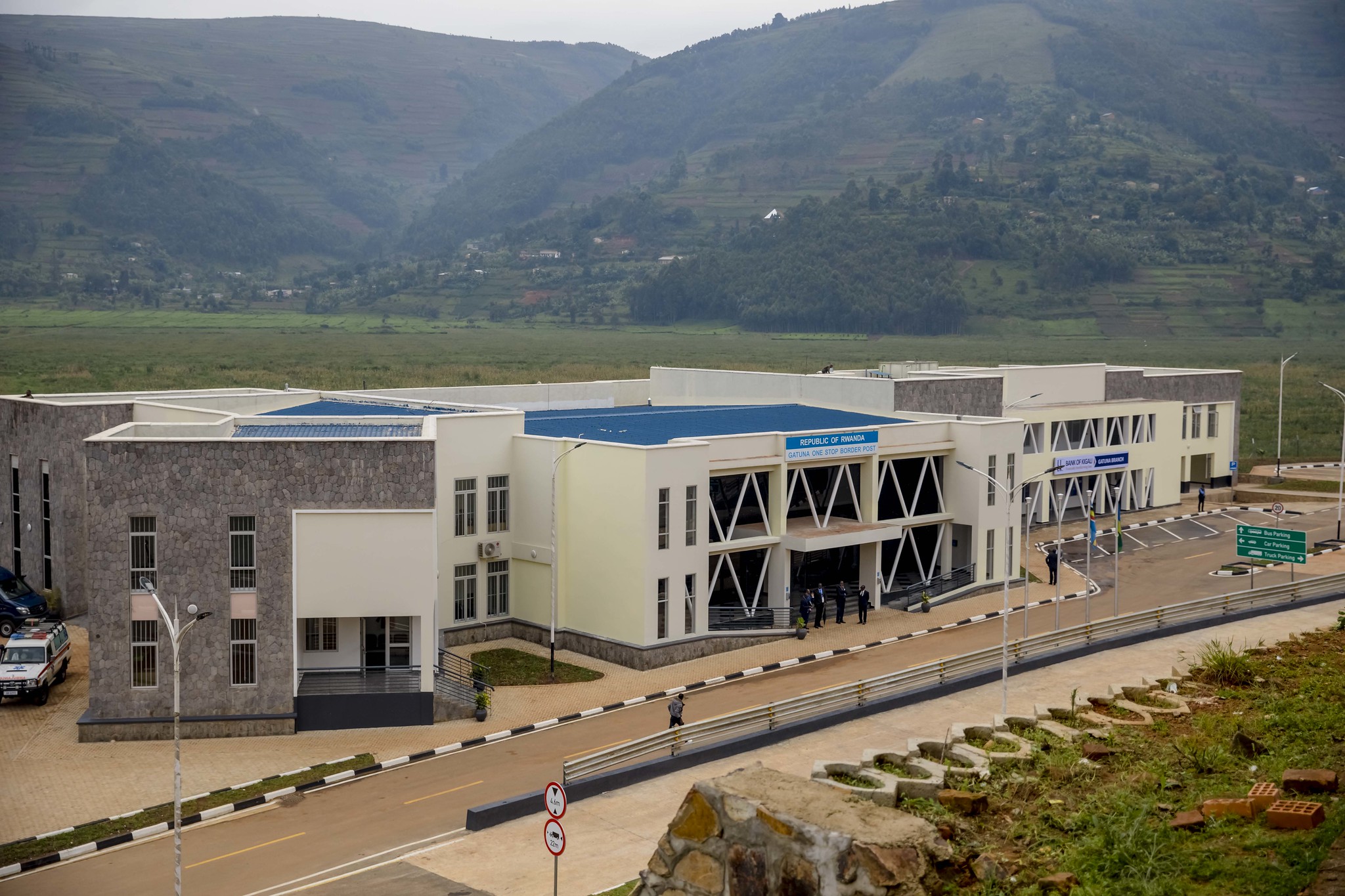
Gatuna One Stop Border Post
There is no border issue, or as Ugandans on social media, for reasons known only to themselves, insist on spelling it, the “boarder” issue. There are issues that led to the closure of the border.
And these are not “personal issues” between Kagame and Museveni, they are clear grievances, for which Rwanda has provided ample evidence.
As the saying goes, trust arrives on foot, and leaves on horseback. To put it in modern perspective, it arrives on a pedal cycle, and leaves in a Ferrari. Rwanda’s trust in its neighbour, jumped in a Ferrari, as far back as the 1990s.
For Uganda, the first step in wooing it back, is to draw away the unconvincing denials of the demonstrable reality of it heavy culpability.
Acknowledging this reality, may be the difference between this being the last time the General has to intervene to make peace, or whether he will be called into action, again, for the third time.

